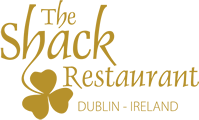The History of Temple Bar
The History of Temple Bar
The history of Temple Bar – The Temple Bar area has a well-deserved reputation as the cultural heart of Dublin. Covering just a few blocks on the south bank of the River Liffey. The area comprises the best that the Irish capital has to offer. – From top class restaurants and lively bars to theatres and renowned art galleries. With its cobbled alleyways, quirky boutiques and street performers. Temple Bar attracts visitors from across the globe, keen to soak up the atmosphere and enjoy some traditional Irish culture.
The area itself has a rich history, spanning back to 795AD when the Vikings settled there. Around 800 years later Sir William Temple, the senior academic administrator of Trinity College, built his home and gardens there. It is thought the area was named in his family’s honour. Another theory is that it was christened as a nod to Temple Bar in London. On April 13 1742 Fishamble Street was the location of the first performance of Handel’s Messiah. Now an annual performance takes place on the same date.
1700s
Yet Temple Bar hasn’t always enjoyed such salubrious times. In 1707 a customs house, where the government’s import and export paperwork was processed, operated from the area. Giving rise to thriving taverns, warehouses and even brothels. However the boom lasted less than a century. In 1791 the customs house was moved to bigger premises and as a result the Temple Bar area fell into decline. Swiftly its buildings became derelict and it was soon considered somewhere best avoided. However its unpopularity actually proved to be a positive thing. As it saved Temple Bar from Dublin’s property developers. Who wiped out much of the city’s historic architecture during the 1960s.
1980s
By the 1980’s the bus company Coras Iompair Eireann was set to build a large bus depot in Temple Bar. While the planning was ongoing the surrounding buildings were offered out at low rents. This attracted artists, shop owners, restaurants and other businesses to the area. This saw Temple Bar begin to thrive again. A number of protests put an end to the bus company’s planned depot. In 1991 the government set up Temple Bar Properties Ltd with the aim of redeveloping the area and attracting visitors. So, the Temple Bar area of today was born – a bohemian, vibrant hub for all to enjoy.
Now Temple Bar welcomes around four million tourists each year. But locals are not immune to its charms either and can often be found enjoying its famous nightlife. From live music to traditional open-air markets, the area really does have something for everyone.
The Shack Restaurant
Like Temple Bar itself The Shack Restaurant offers a modern twist on something that is quintessentially Irish.
This building retains its early form and some historic fabric, including its brickwork and roof form. The restrained façade of the upper floors shares some proportions and material characteristics with its neighbours. Lending a sense of continuity to the streetscape. Thom’s Directory of 1862 describes the building as in use as a watchmakers’ workshop. Essex Street was opened in 1674. Named after Arthur Capel, the Earl of Essex and Lord Lieutenant of Ireland at the time. The street was divided into east and west in the 1760. When Parliament Street was laid out, and was largely rebuilt in late nineteenth and early twentieth centuries.









